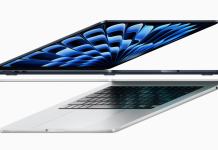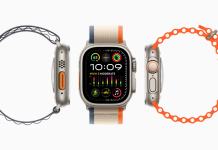The MacBook is a line of Mac notebook computers created by Apple Inc. since 2006. It replaced the PowerBook and iBook brands during the transition to Intel processors. The current lineup includes the MacBook Air and the MacBook Pro. There were two separate lines named “MacBook” from 2006 to 2012 and 2015 to 2019. The MacBook brand was the top-selling line of premium laptops in 2015.
Initially, the MacBook family had designs similar to the iBook and PowerBook, but later adopted a unibody aluminum construction like the MacBook Air. The keyboards have black plastic keys on a metallic aluminum body. The lids are held closed by a magnet without a mechanical latch, a feature introduced with the polycarbonate MacBook. The newer compact models have components soldered or glued in place, unlike the older MacBooks where memory, drives, and batteries were accessible. All current MacBooks have backlit keyboards.
The MacBook was discontinued from 2012 to 2015 and again in 2019. It was reintroduced in 2015 with an ultraportable design and an all-metal enclosure. The discontinuation in 2019 followed a price reduction of the 3rd generation MacBook Air and the discontinuation of the 2nd generation model.
History of MacBook :
The MacBook is a line of laptop computers developed and produced by Apple Inc. It was first introduced in May 2006 as a replacement for the iBook and PowerBook series of laptop computers. Since then, Apple has released several generations of MacBooks, each with their own advances and improvements. Here’s a brief history of the MacBook:

MacBook (2006): The original MacBook was announced on May 16, 2006, and featured a 13.3-inch display, an Intel Core Duo processor, and a polycarbonate plastic case. It marked Apple’s transition from PowerPC processors to Intel processors.
MacBook Pro (2006): Apple also introduced the MacBook Pro in 2006, which was aimed at professionals and featured higher-end specs compared to the standard MacBook.
MacBook (2008): In late 2008, Apple redesigned the MacBook, introducing a one-piece aluminum case and a glass multi-touch trackpad. This redesign laid the foundation for the design direction of the MacBook for years to come.
MacBook Pro (2008): The MacBook Pro received a similar one-piece redesign, offering improved performance and a sleeker appearance.
MacBook (2010): In 2010, Apple introduced a new line of MacBooks with a more compact design. The MacBook just got thinner and lighter, with a 13-inch display, solid-state drives (SSDs) as standard, and longer battery life.
MacBook Pro (2012): Apple released a major redesign of the MacBook Pro in 2012, with a slimmer profile, a higher-resolution Retina display, and the removal of the optical drive. This model introduced the MacBook Pro with Retina Display, which became a flagship product for professionals.
MacBook Air (2008): Along with the MacBook Pro, Apple introduced the MacBook Air in 2008, aimed at users who valued portability. The MacBook Air was incredibly thin, featured a wedge-shaped design, solid-state storage, and a lightweight build.
MacBook (2015): In 2015, Apple introduced a new line called simply “MacBook.” This model was even thinner and lighter than the MacBook Air, with a 12-inch Retina display, a USB-C port, and a new butterfly keyboard mechanism. It represented a new direction for Apple’s line of notebooks.
MacBook Pro (2016): The MacBook Pro underwent a major redesign in 2016, with a slimmer profile, a larger Force Touch trackpad, the introduction of the Touch Bar (a touchscreen strip above the keyboard), and a switch to USB-C ports.
MacBook (2018): Apple updated the MacBook in 2018 with improved specifications, including faster processors and more storage options. It also featured the controversial butterfly keyboard mechanism, which received criticism for its reliability issues.
MacBook Air (2018): Apple released an updated MacBook Air in 2018, with a Retina display, thinner bezels, USB-C ports, Touch ID, and improved internals.
MacBook Pro (2019): Apple updated the MacBook Pro lineup in 2019, offering improved performance, an updated keyboard mechanism (replacing the butterfly keyboard with a scissor-switch mechanism), and a 16-inch model with a larger screen.
MacBook Air :
The MacBook Air is Apple’s affordable laptop, initially placed above the MacBook, but later served as the entry-level portable Mac. From 2010 to 2017, the base model featured a 13-inch display, two USB Type-A 3.0 ports, a Thunderbolt 2 port, and an SDXC card slot (exclusive to the 13-inch model). It lacked a Retina display. An 11-inch version was available from 2010 through 2016. In 2017, the MacBook Air received a minor update with a faster processor.
On October 30, 2018, a major design change occurred, removing the USB Type-A ports, MagSafe, and SD card slot. Instead, you got two USB-C/Thunderbolt 3 ports, a Retina display, Intel Y-series Amber Lake i5 CPU, a Force Touch trackpad, and a third-gen butterfly keyboard with Touch ID. The base price increased, but the 2017 base configuration remained until July 9, 2019.
On November 10, 2020, Apple introduced the MacBook Air with the Apple M1 chip, which offers quiet fanless operation. Performance outperformed most Intel laptops.
At WWDC 2022 on June 6, Apple introduced a new MacBook Air with the Apple M2 chip. It borrowed design elements from the fifth-generation MacBook Pro, including a flat, slab-shaped design, full-size function keys, a Liquid Retina display with rounded corners and a notch that houses a 1080p webcam, and a seamless design. fan. It included two Thunderbolt 3/USB 4 ports and reintroduced MagSafe charging.
Finally, at WWDC 2023 on June 5, Apple announced a larger 15-inch version of the M2-based MacBook Air.
MacBook Pro :
The MacBook Pro is Apple’s premium notebook series, available in 13-, 14-, and 16-inch sizes. The current-generation 13-inch model, introduced in October 2018, features an OLED touch strip called the Touch Bar, an integrated Touch ID sensor with the power button, and four USB-C/Thunderbolt 3 ports. As of May 2020 , received updates such as the magic keyboard and a physical escape button.
On November 13, 2019, Apple released the 16-inch MacBook Pro, replacing the previous 15-inch model. It introduced the Magic Keyboard, a physical Escape key, improved speakers, microphone, and thermal system. It also offered options from AMD’s Navi graphics architecture, up to 64GB of RAM, 8TB of storage, and a 100Wh battery.
On November 10, 2020, Apple released a new MacBook Pro with the M1 chip, which features a fan for sustained performance. It only came in a 13-inch version, with two Thunderbolt ports and a maximum of 16GB of RAM.
On October 18, 2021, Apple introduced new 14-inch and 16-inch MacBook Pro models based on the M1 Pro and M1 Max chips. These addressed previous criticisms and brought sticky function keys, an HDMI port, an SDXC reader, and MagSafe charging. They also included a Liquid Retina XDR display, ProMotion, 1080p webcam, Wi-Fi 6, Thunderbolt 4 ports, a six-speaker sound system, and support for a third 6K display on M1 Max models.
On June 6, 2022, Apple announced an updated 13-inch MacBook Pro with the M2 chip, housed in the same chassis as the M1 version.
On January 17, 2023, Apple introduced updated 14-inch and 16-inch MacBook Pro models with M2 Pro and M2 Max chips. These upgrades included Bluetooth 5.3, Wi-Fi 6E, HDMI 2.1, longer battery life, and up to 96GB of memory with the M2 Max models.







